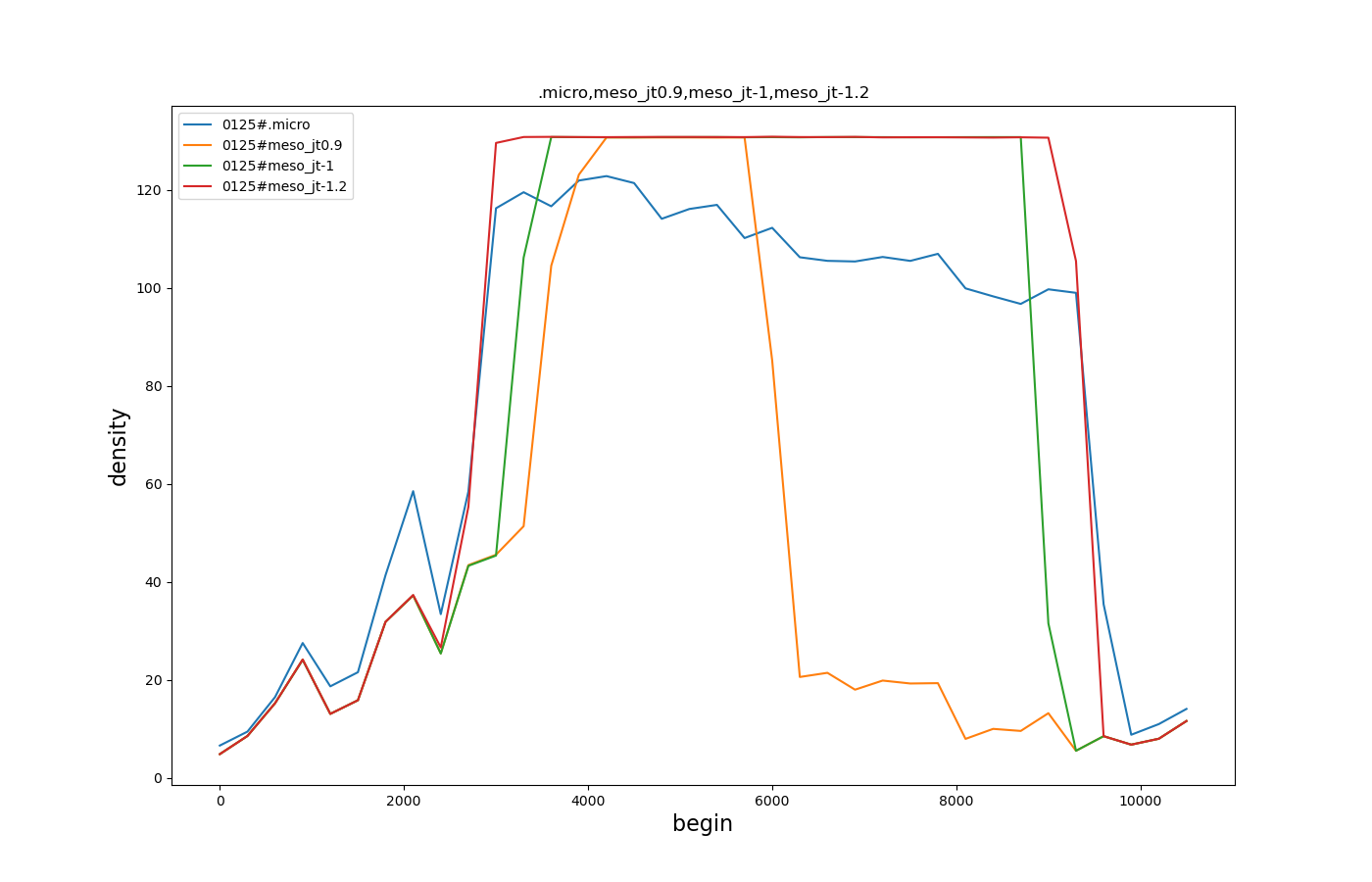Hello,
Your concern may be valid insofar the current algorithm possibly overestimates void space propagation (especially on short edges).
However, the mismatch between microscopic and mesoscopic behavior is mainly caused by an unfortunate choice of the parameter meso-jam-threshold 0.9
With this setting, the meso model almost never enters the jammed state.
The default values from Eissfeldts dissertation was set to 0.29 (calibrated for motorways). This is unsuitable for road networks with a wide range of speed limits.
The default works much better than 0.9 and an even better fit is reached with -1.2
For clarity, the plot only shows the most upstream edge which also showed the highest discrepancy.
Note, that the lower maximum density in sumo is an artifact of the insertion rules: there are no half cars and in micro, the next car can only enter if a full gap has traveled to the start of the edge. In contrast, meso cars are inserted as soon as the total space on an edge permits it.

regards,
Jakob

